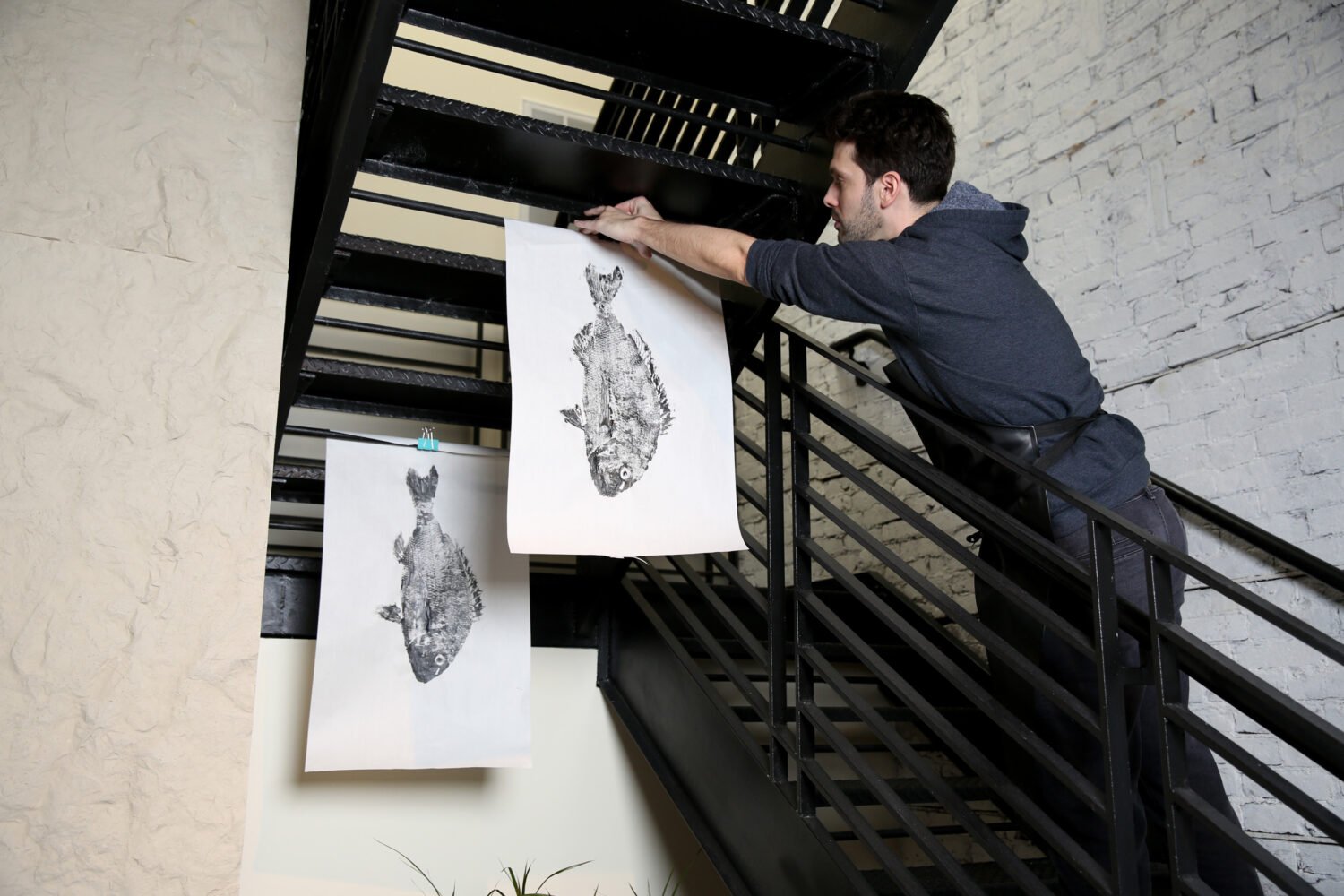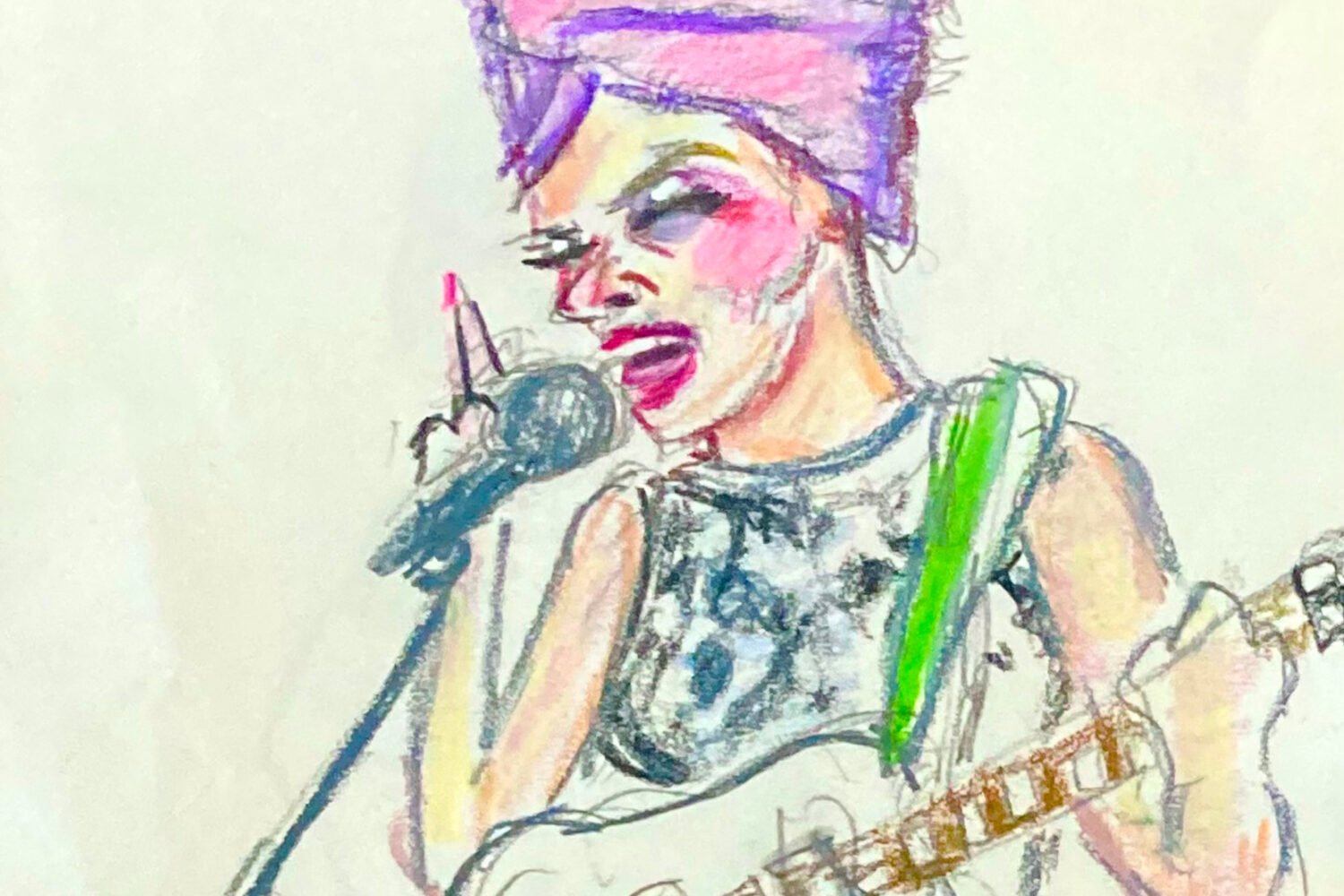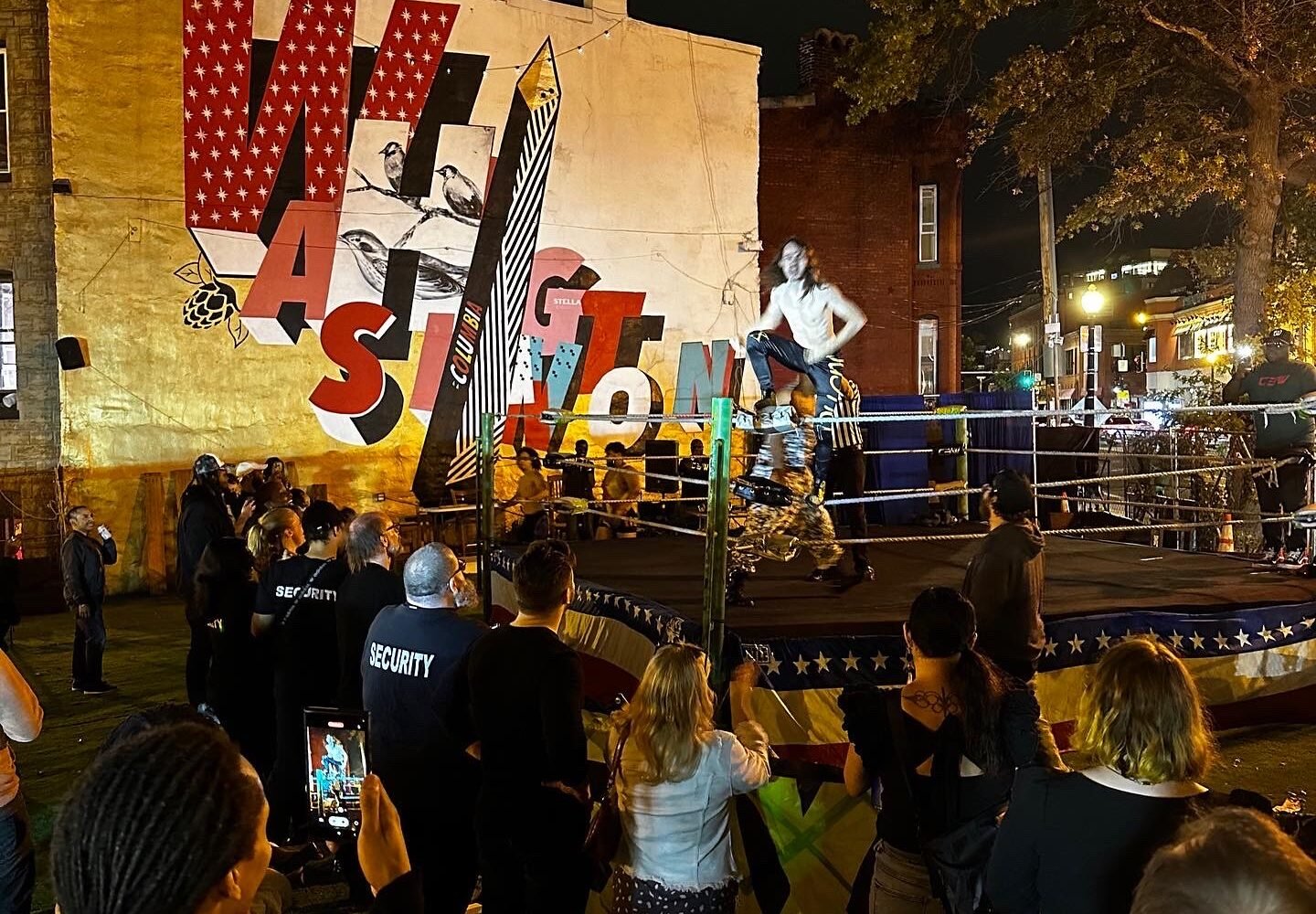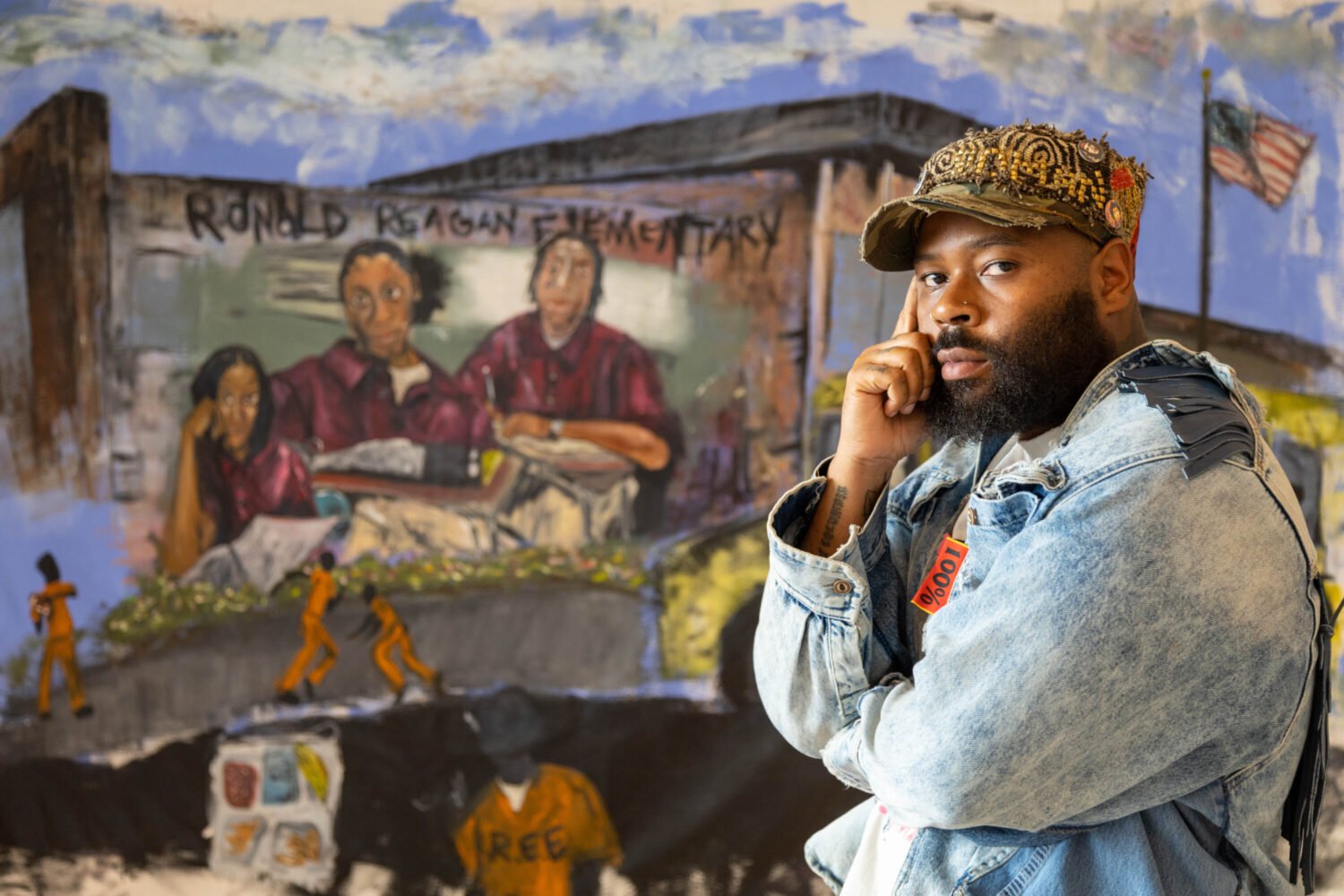DC is home to some seriously enduring works of art, from a 14th-century Giotto painting at the National Gallery of Art to an Olmec mask at Dumbarton Oaks that could date to 900 BC. But the least lasting? That just might be the work of Chelsea Ritter-Soronen.
Ritter-Soronen specializes in sidewalk chalk art, which tends—depending on the weather—to stick around no more than a few days. Recently, she spent ten hours on an intricately designed mural of Anacostia wildlife at a back-to-school event in Southeast DC, only to pressure-wash it away just hours after it was done. Giotto would have been appalled.
But for Ritter-Soronen, ephemerality is part of the appeal. “Sometimes it’s fun to wash away our work because it’s really liberating,” she said as she added strokes of fluorescent pink to a lotus flower. With more traditional art, she often finds herself unsure what to do with a work once it’s completed. “I’m like, ‘Now what?’ ”
Ritter-Soronen runs the DC group Chalk Riot, an all-female crew of (sometimes literal) street artists. It started as a thing she did with friends for fun, a way to create public art without breaking the law, she says. But Ritter-Soronen—who studied scene painting and costume design in college—soon fell in love with the art form. She honed her abilities while traveling around Europe and Australia, supporting herself as a chalk busker. “What a wonderful way to get to know another part of the world: from the ground,” she says.
View this post on Instagram
Obviously, you don’t earn tips from passersby unless your drawings are pretty impressive, and Ritter-Soronen has some serious skills. Chalk Riot’s large-scale murals can be unnervingly realistic, creating the illusion of three-dimensional objects emerging from the asphalt. Even in two dimensions, the drawings are eye-poppingly vibrant and creative. But it’s not just about visual pizazz: Ritter-Soronen also advocates chalk art as a form of protest, and Chalk Riot provides an activist how-to guide on its website.
Though still a small operation, Chalk Riot—which also includes DC artists Ann Gill and Sam Hamilton as well as Austin’s Liza Fishbone—is increasingly in demand, and it’s been tapped for collaborations with organizations such as Amnesty International and DC’s Department of Transportation. The group is also often asked to create art memorializing people who have recently died. Ritter-Soronen says these chalk tributes are the only times nobody ever seems to ask what happens when it rains. “Life is much easier when we let things go,” she said at one point while working on the drawing in Southeast. “When we accept impermanence, we treat things with more care.”
This article appears in the October 2022 issue of Washingtonian.



















